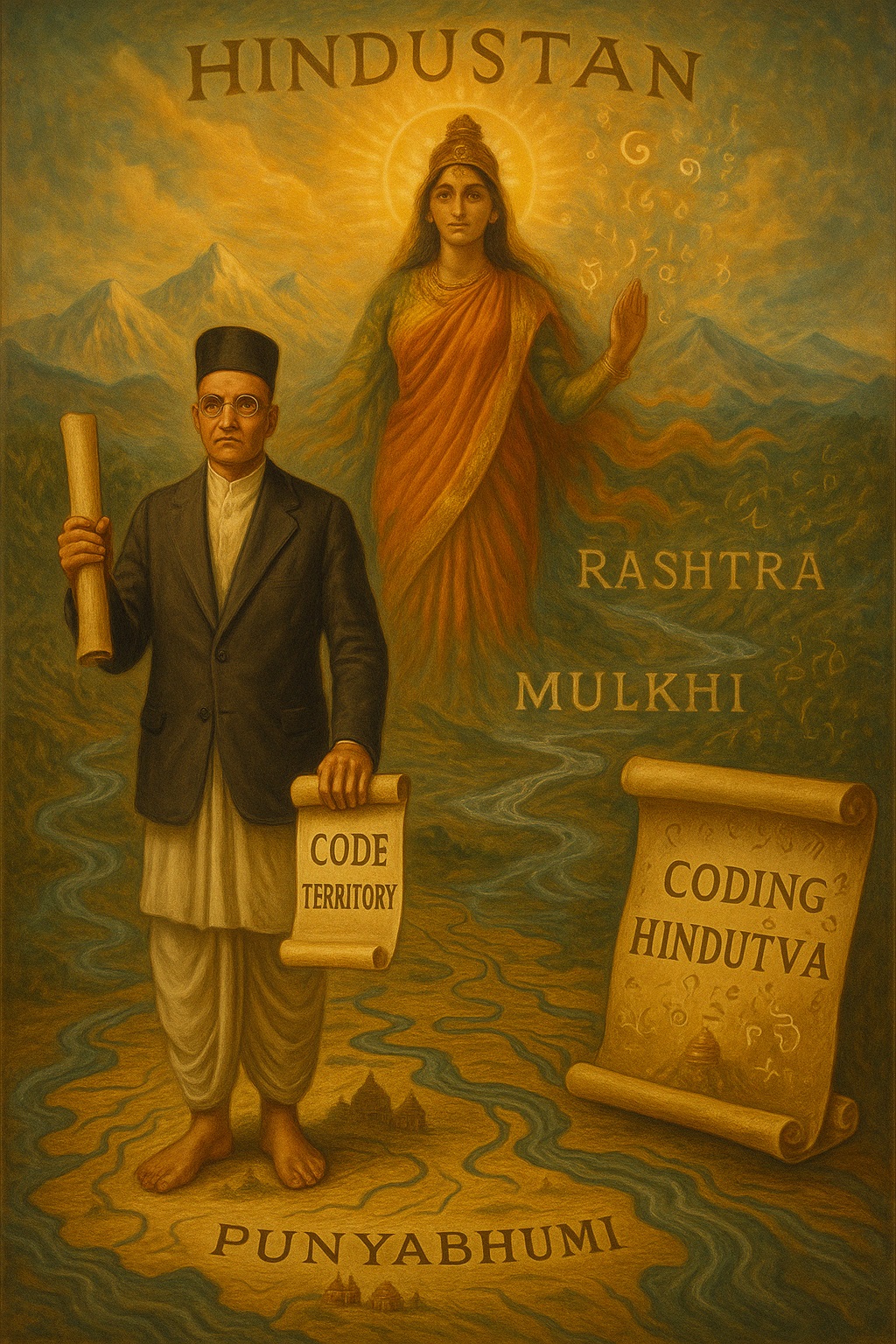Savarkar’s Coding of Hindutva; Metacode Rashtra, Part 2 ; Code Territory (1/6)
In the complex tapestry of Hindutva, the concept of Rashtra, the shared land, more specifically the Code Territory, plays a pivotal role. It’s more than just a map; it’s the foundation upon which the idea of a unified Hindu identity is built. To understand this, let’s delve into how Savarkar viewed the importance of territory.
The Primacy of Space
Heinz Kloss, in his 1969 work, emphasized that space is the most important, the primary factor that is effective in the emergence of nations. He argued that even if humanity were united in race, language, and worldview, geographical divisions would still lead to separate political entities. This highlights the inherent power of land to shape identity and community.
Savarkar echoed this sentiment. He declared that Hindustan is the land of the Hindus, therefore the first essential component must be a geographical one. However, Savarkar went beyond simply acknowledging the dividing power of space. He saw it as a unifying force, a “nation-building function” rather than a “nation-separating function.”
Building Unity Through Territory
For Savarkar, a well-defined territory, both internally connected and externally distinct, was crucial for fostering cohesion and unity. He believed that the name of this land should evoke not just a physical space, but a “motherland” filled with cherished memories. He argued that Hindustan, with its vastness, natural boundaries, and deep-rooted history, was uniquely positioned as such a territory.
Operationalizing the Code Territory
How did Savarkar translate this idea into practical terms? He sought to create a sense of shared origin, a common birthplace, to foster identity and affinity. This concept is evident in his writings, particularly his accounts of his imprisonment in the Andaman Islands.
He used the term Mulkhi, referring to someone from the same birthplace, to illustrate this connection. While he emphasized the personal connection to one’s actual birthplace, he extended this concept to the national level, arguing that his countryman is a man from his birthplace meant a shared connection to the land of Hindustan.
Savarkar aimed to establish a sense of belonging based on geography, independent of religious or sociocultural factors. He asserted that a Hindu, a Mulkhi, is first and foremost a citizen of Hindustan, either by birth or through ancestral ties, claiming the land as their motherland.
The Significance of Punyabhumi
It’s important to note the connection to the concept of Punyabhumi, the sacredness of the territory. Savarkar’s codification of the “sanctity of the territory” further reinforces the idea that Hindustan is not just a physical space but a sacred one, deeply intertwined with Hindu identity.
Final Thoughts
In essence, Savarkar’s concept of the Code Territory highlights the pivotal role of geography in the Hindutva framework. It’s a space that defines, unites, and sanctifies, forming the bedrock of a shared Hindu identity. Understanding this perspective is crucial for comprehending the broader Hindutva ideology.
What are your thoughts on the role of territory in shaping national identity? Share your comments below!
Sources:
KLOSS, Heinz. 1969. Grundfragen der Ethnopolitik im 20. Jahrhundert – die Sprachengemeinschaften zwischen Recht und Gewalt. Braumüller: Wien, Bonn
SAVARKAR, Vinayak Damodar. 1999. Hindutva: Who is a Hindu. Seventh Edition. Swatantryaveer Savarkar Rashtriya Smarak: Mumbai.


Leave a Reply